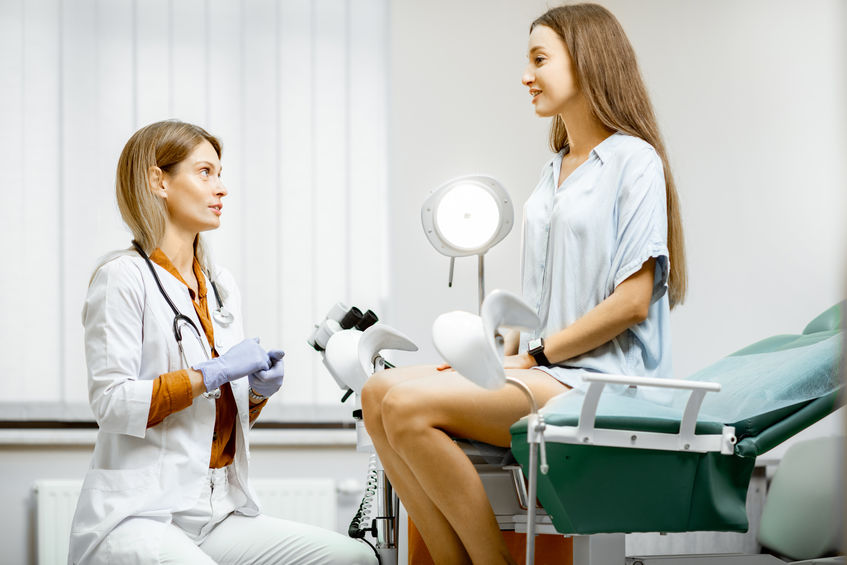Yeast infections are common. A healthy vagina contains bacteria and some yeast cells, but when the balance of bacteria and yeast changes, the yeast cells can multiply, causing itching, swelling, and irritation. If you’ve had one before, you can typically spot the initial symptoms of a vaginal yeast infection right away. They are painful, itchy, and can make you feel gross or embarrassed.
What is a Yeast Infection?
Yeast infections, also called vaginal candidiasis, are fungal infections. Yes, yeast (candida) is a fungus, like mold or mushrooms. According to the CDC, it’s found naturally in all of us — in the vagina, mouth, throat, and gut, but our healthy immune systems generally control it. However, sometimes our body chemistry gets thrown off, and we cannot keep the candida under control. The fungus multiplies, infection occurs, and you’re left with some uncomfortable symptoms. This can happen for various reasons, but the outcome is a yeast infection that triggers vaginitis, an inflammation of the vagina that can result in discharge, itching, and pain.
Causes
Several things can cause yeast to grow uncontrolled in your body. Many of these things are unavoidable. For instance, you could have an ear infection and be prescribed antibiotics. Antibiotics can destroy or drastically alter the balance of bacteria that protect your vagina, resulting in a yeast infection.
Other common causes of yeast infections include:
- Pregnancy
- Menopause
- Hormonal Birth Control
- Uncontrolled Diabetes
- Compromised immune system caused by disease (HIV, for example) or the use of corticosteroids
- Stress
Symptoms
Generally, burning and itching are your first clues that a yeast infection is coming or has already arrived. The main symptoms include:
- Itching in both the vulva (external) and vagina (internal)
- Vaginal rash
- Redness and swelling
- Thick, white, odorless discharge
- burning during urination or sex
- Soreness
- Pain during sex
Diagnosis and Treatment
If you recognize you have a yeast infection and you have experienced one before, you can treat the infection at home. Over-the-counter solutions generally contain miconazole, an antifungal medicine that you insert directly into your vagina, and the infection should clear up within a few days.
You will need to visit your healthcare provider for more serious yeast infections or your first yeast infection. Your doctor will ask about your medical history. This includes whether you’ve had yeast infections before. They may also ask if you’ve ever had an STI. The next step is a pelvic exam. Your doctor will examine your vaginal walls and cervix. They’ll also look at the surrounding area for external signs of infection. Depending on what your doctor sees, the next step may be to collect cells from your vagina. These cells go to a lab for examination. Lab tests are usually ordered for women who have yeast infections regularly or for infections that won’t go away.

Possible treatments for severe or complicated yeast infections include:
- 14-day cream, ointment, tablet, or vaginal suppository treatment
- Two or three doses of fluconazole (Diflucan)
- Long-term prescription of fluconazole taken once a week for six weeks, or long-term use of a topical antifungal medication
Schedule a follow-up visit if your symptoms return within two months.
Prevention
Chances are that you know exactly what led to your yeast infection. For example, some women experience these infections every time they take antibiotics. Whether you know the exact cause, here are tips to avoid recurring infections.
Make sure to:
- Eat a well-balanced diet
- Wear natural fibers such as cotton, linen, or silk
- Eat yogurt or take supplements with lactobacillus
- Wash undergarments in hot water
- Replace feminine products frequently
Avoid:
- Douching
- Wearing tight pants, pantyhose, tights, or leggings
- Sitting in hot tubs or taking frequent hot baths
- Using feminine deodorant or scented tampons or pads
- Sitting around in bathing suits or wet clothing
Can Men Get Yeast Infections?
While vaginal yeast infections are more common in women, men can get yeast infections, too. When it affects the penis, this is known as a penile yeast infection. The groin area is especially prone to Candida overgrowth because of skin folds and moisture. Still, penile yeast infections are mostly caused by having unprotected vaginal intercourse with a woman who has the infection, too. You can help prevent a yeast infection by wearing condoms during sex. Regular bathing can also help.
The symptoms of a yeast infection in men may not be as prominent, though you might see redness and white patches along the penis as well as burning and itchy sensations. See your doctor for a proper diagnosis if you think you have a penile yeast infection.
Yeast infections are common occurrences, but prompt treatment can help reduce the uncomfortable symptoms within a few days. By recognizing your own risk factors, you can prevent future infections.
If you are experiencing vaginal itching or other uncomfortable signs of a yeast infection, South Avenue Women’s Services can help you. Along with being the leading provider of abortion services in the Western NY area, we are a full-service OBGYN practice. If you suspect you have a yeast infection, our medical professionals can offer you the confidential, compassionate care you need and deserve.
Call (585)271-3850 today to schedule an appointment with a women’s healthcare professional.

